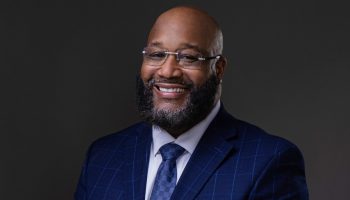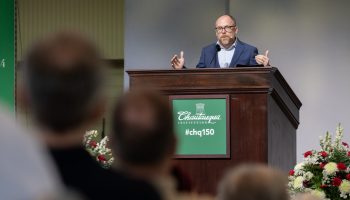You meet the elephant. You spend time in the story with the elephant. The elephant would be killed. You would be sad.
For years, that was the classic animal poaching story at National Geographic, said Bryan Christy, chief correspondent for special investigations unit at National Geographic.
Christy will deliver the morning lecture at 10:45 a.m. today in the Amphitheater.
During his career at National Geographic, Christy made it his goal to change that narrative from a victim story to a crime story. His work focuses on large-scale exploitation of wildlife and natural resources, specifically elephant poaching and ivory trafficking.
“Let’s figure out who the bad guy is. We already know who the victim is,” Christy said. “And let’s go after the bad guy, so instead of feeling sad at the end you might feel angry and want a change.”
Christy said this mix of crime and wildlife will be a main point of discussion in his lecture. He plans to discuss how he has used innovative technology and other techniques to pursue that criminal world.
Christy said his background as a lawyer pushes him to research beyond what might be a good story on the surface and deeper to the foundation of the problem.
However, his law career did not always provide such gratification.
Christy said when he was a little boy he loved animals and writing stories. Despite the clear connections with his position at National Geographic today, his path there was not so linear.
In an effort to become a “very serious man,” Christy said he opted out of being a writer in college to major in accounting. He then attended law school and worked in Washington, D.C. as a lawyer.
However, when his father got sick, Christy’s life changed.
“When you are going to lose someone you care about, it forces you to think about your own values,” Christy said. “I decided when I lost him that I was going to lead a life I was proud of.”
Christy quit his law firm and sold his house. He said he spent five years unemployed trying to find his way as a writer. Eventually, he found his niche in crime writing.
His childhood joys returned and proved Christy, who was honored as National Geographic Explorer of the Year in 2014, a natural fit for the organization.
One of the most important discoveries made during his research, according to Christy, shined light on religious groups in Asia that were and are supporters of illegal ivory trade, using it to carve religious figures.
To further investigate the crimes of ivory trafficking, Christy said he had a fake tusk built with a GPS-based satellite system planted inside it. He introduced the fake tusk into the black market in Central Africa.
Results of the experiment revealed that the fake tusk made its way to the area of Central Africa where terrorist Joseph Kony and the Lord’s Resistance Army operated.
“We were able to show the role of Sudan as a terrorist state in the ivory trade, and the cost to rangers on the ground protecting elephants,” Christy said.
Christy said typically he works alone on his stories for six months to a year. Next, he collaborates with a National Geographic photographer for another six months to put his narrative into images.
Deciding how to prioritize story importance at National Geographic requires a little bit of instinct and a little bit of paying attention to what is happening, Christy said.
He also said he looks for wildlife stories that act as windows to much bigger human, criminal and social problems.
One of these social problems, according to Christy, resides in the way people tend to define wildlife. People should think about fish and ocean life as wildlife, he said, and not only as a food species.
“A bluefin tuna is as majestic as any rhinoceros and more endangered,” Christy said. “But because it is something that we eat regularly we don’t treat it the same way; we don’t think about it the same way.”
Trees and forests must also be thought of as wildlife, Christy said. If people begin to think about these things as wildlife, policies to conserve them will adjust to ensure they have a future.
Even at National Geographic, Christy said he sometimes has to explain that how timber is used is a wildlife issue, because people are not used to thinking about it that way.
“One of the things I am trying to do is results-oriented reporting,” Christy said. “Which is to identify stories and research them and investigate them deeply enough to understand not only what the problem is, but also what the solution might be if more people were aware of the true extent of the problem.”




